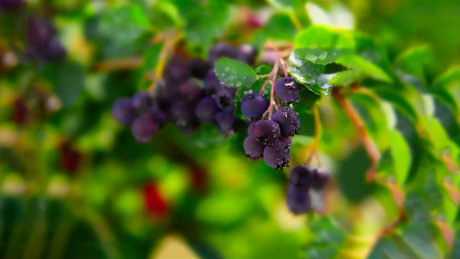 Scientists at Wrocław University of Environmental and Life Science (Poland) have presented the distributions of total soluble solids, pectins, the sum of polyphenolic and terpenoid compounds as well as the antioxidative potency of fruit and their parts, such as peel, flesh, and seeds of Saskatoon berry genotypes in a study published on Food Chemistry journal.
Scientists at Wrocław University of Environmental and Life Science (Poland) have presented the distributions of total soluble solids, pectins, the sum of polyphenolic and terpenoid compounds as well as the antioxidative potency of fruit and their parts, such as peel, flesh, and seeds of Saskatoon berry genotypes in a study published on Food Chemistry journal.
Saskatoon berries (Amelanchier alnifolia) look much like blueberries, many describe the taste of saskatoon as having a sweet, nutty almond flavor.
"The contents of individual bioactive compounds of fruit fraction of Saskatoon berry cultivars and cultivation clones significantly depended on berry genotype and compounds distribution within particular parts of the fruit. The fruit peel contained mainly anthocyanins, polymerized compounds, hydroxycinnamic acids, triterpenoids, and tetraterpenids, as well as exhibited antioxidant activity - the scientists explain - The major compounds identified in the fruit flesh included soluble solids, ash, flavonols. In turn, polymeric procyanidins was determined in the seeds of fruit. Individual parts of Saskatoon berry fruit contained many health-promoting constituents and could be used as attractive materials for the production of functional foods or dietary supplements".
Source: Sabina Lachowicz, Łukasz Seliga, Stanisław Pluta, 'Distribution of phytochemicals and antioxidative potency in fruit peel, flesh, and seeds of Saskatoon berry', 2020, Food Chemistry, Volume 305.
